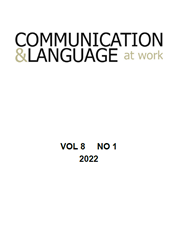Communicating strategy in a town hall setting Is dialog possible?
Main Article Content
Abstract
This article focuses on strategy communication in an administrative housing association. It investigates top management’s attempts to facilitate dialog with employees in a town hall meeting. The purpose is to provide insights into the communicative methods employed, thereby contributing to understanding what can be considered as ‘true’ dialog, why dialog is important, and whether dialog is possible in this specific organizational context.
Within the theoretical frame of change communication and strategy-as-practice, a case study of a specific town hall meeting is conducted. Based on ethnomethodological conversation analysis three key sequences from a specific town hall meeting are analyzed, and the participants’ actions are described as here-and-now moments for facilitating or hindering dialog.
The study points to several communicative techniques employed by management that discourage dialog, instead of facilitating it. Moreover, the meeting is designed and performed as managers’ one-way communication of information, which limits their access to valuable information from the operational employees. In this case, the micro practices investigated are considered an impediment to organizational change and a move towards organizational silence (Tourish & Robson, 2006; Morrison and Milliken, 2000).
Article Details

This work is licensed under a Creative Commons Attribution-NonCommercial-ShareAlike 4.0 International License.
The journal is published under a Creative Commons license Attribution Non-commercial No derivatives (cc by-nc-sa) http://creativecommons.org/about/license. CLaW allows the author(s) to retain publishing rights without restrictions. Copyright remains with authors without restrictions.

